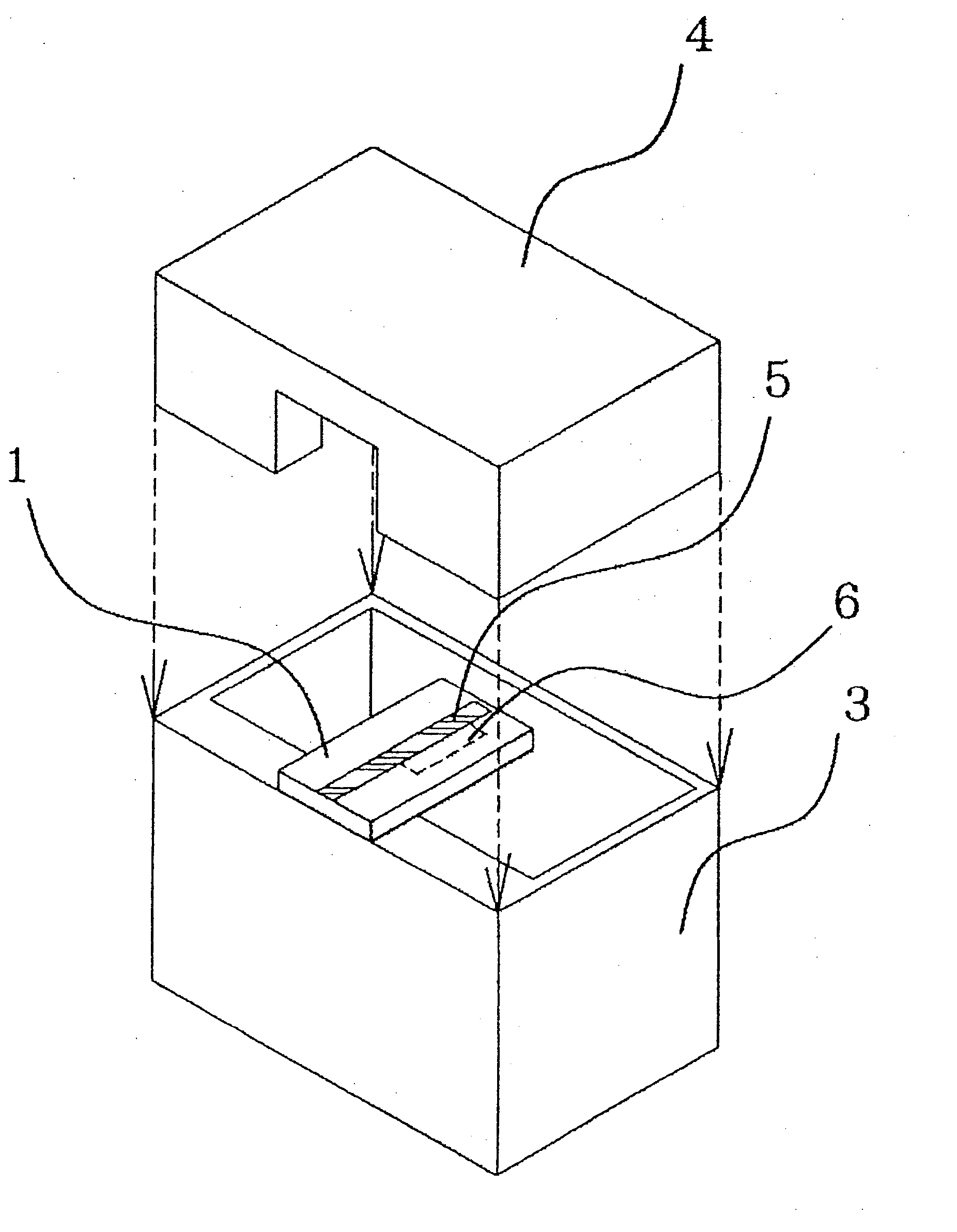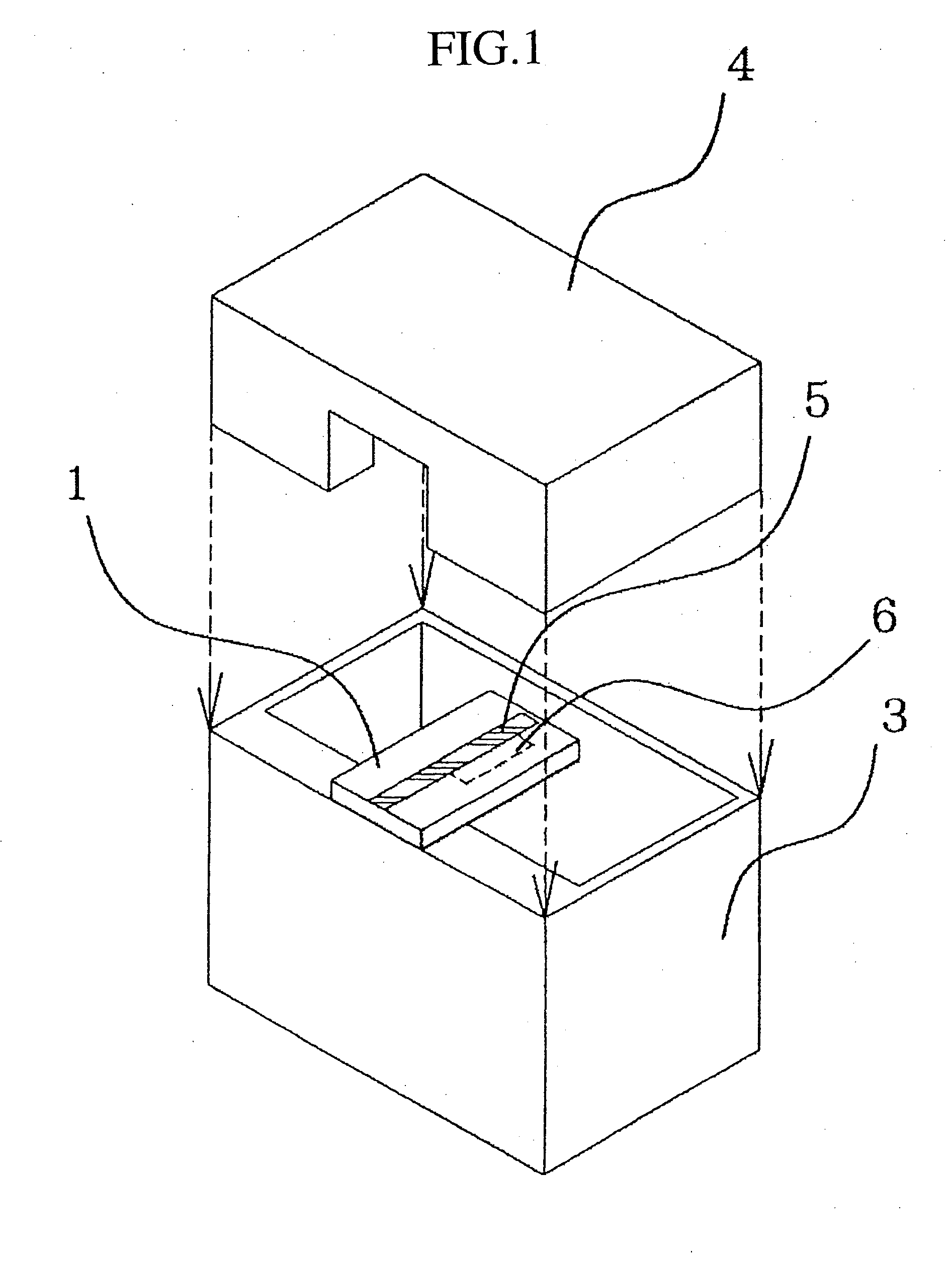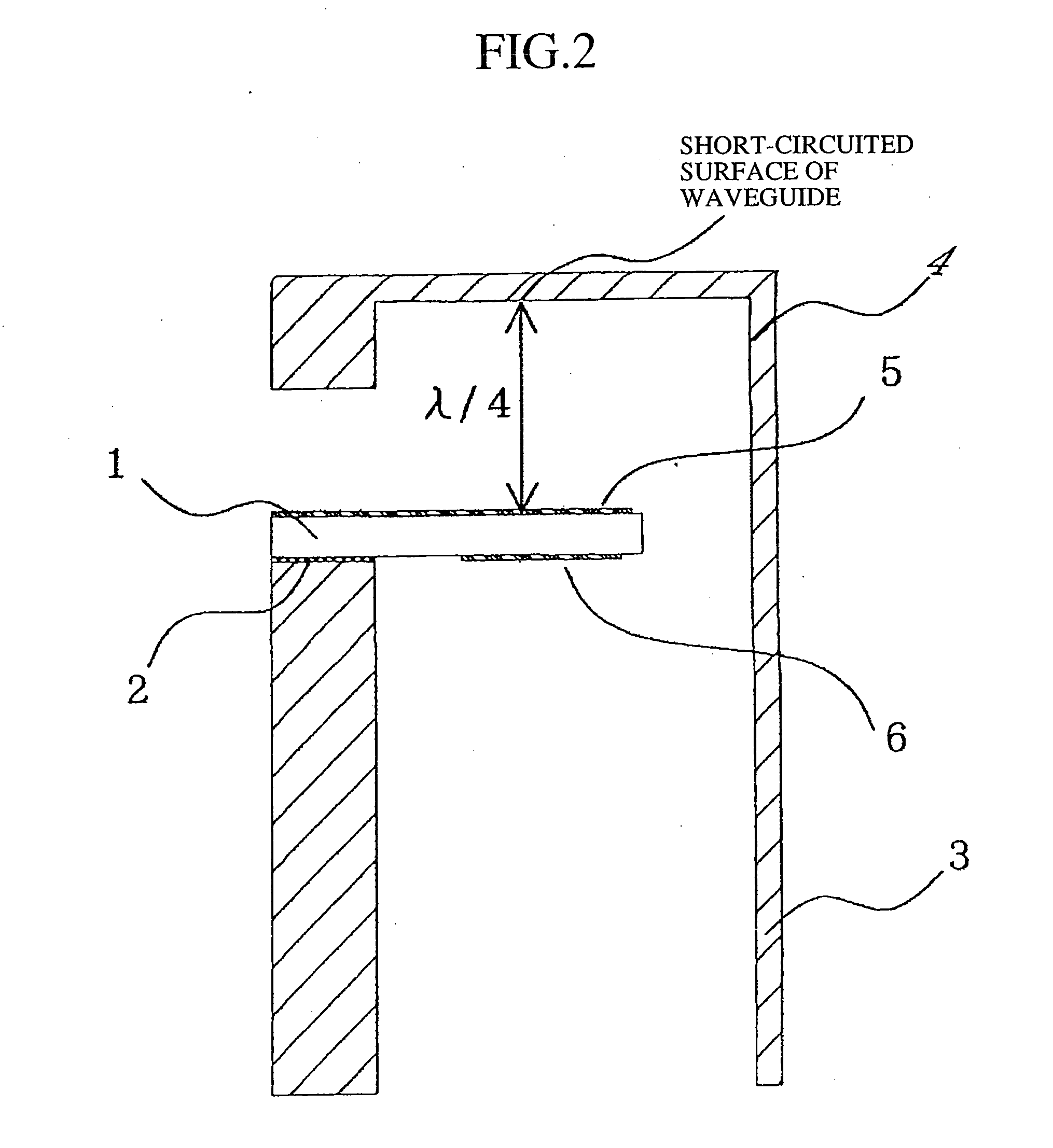Microstripline waveguide converter
a converter and microstripline technology, applied in the direction of impedence networks, electrical devices, coupling devices, etc., can solve the problems of deteriorating difficulty in reducing the size of the converter, and inability to reduce unwanted waves, etc., to achieve the enhancement of the electric characteristics of the converter and the reduction of the converter's siz
- Summary
- Abstract
- Description
- Claims
- Application Information
AI Technical Summary
Benefits of technology
Problems solved by technology
Method used
Image
Examples
first embodiment
[0037] The configuration of a microstripline waveguide converter according to a first embodiment of the present invention will now be described by reference to FIGS. 1-5.
[0038]FIG. 1 is a perspective view of the configuration of the microstripline waveguide converter according to the first embodiment of the present invention. FIG. 2 is a sectional view of the microstripline waveguide converter shown in FIG. 1. FIG. 3 illustrates a conductor pattern disposed on the top surface of the dielectric substrate shown in FIG. 1 and FIG. 2. FIG. 4 illustrates conductor patterns disposed on the bottom surface of the dielectric substrate.
[0039] In FIGS. 1-4, the reference numeral 1 represents a dielectric substrate, the numeral 2 represents a ground conductor pattern, the numeral 3 represents a waveguide, the numeral 4 represents a short-circuited waveguide block, and the numerals 5 and 6 represent strip conductor patterns formed on the dielectric substrate 1, respectively. In these figures, ...
second embodiment
[0049] The microstripline waveguide converter according to a second embodiment 2 will be described by reference to FIG. 6 and FIG. 7. FIG. 6 is a perspective view of the configuration of a microstripline waveguide converter according to Embodiment 2 of the present invention. FIG. 7 illustrates conductor patterns disposed on the bottom surface of the dielectric substrate shown in FIG. 6.
[0050] According to the second embodiment, the shape of the strip conductor pattern 6, which is disposed on the bottom surface of the dielectric substrate 1, shown in FIG. 6 and FIG. 7, is arranged so as to be of meander-line shape, thereby enabling the band broadening of the rejection band. Moreover, according to the second embodiment, the band one-half wavelength of which is longer than the length of the strip conductor pattern 5, which projects into the waveguide 3, can be reduced.
[0051] Additionally, when the strip conductor pattern 6 has a shape of L character type, T character type, cross type...
third embodiment
[0053] The microstripline waveguide converter according to a third embodiment of the present invention will be described by reference to FIG. 9 and FIG. 10. FIG. 9 is a perspective view of the configuration of a microstripline waveguide converter according to the third embodiment of the present invention. FIG. 10 illustrates conductor patterns disposed on the bottom surface of the dielectric substrate shown in FIG. 9.
[0054] In the third embodiment, a plurality of strip conductor patterns 6 each having a length different from each other are provided on the bottom surface of the dielectric substrate 1 shown in FIG. 9 and FIG. 10, thereby reducing a plurality of unwanted waves. Therefore, according to the third embodiment, similarly as in the first embodiment, the band rejection function can be provided in the inside of the converting portion of the microstripline waveguide converter, and additionally, a plurality of unwanted waves can be reduced.
PUM
 Login to View More
Login to View More Abstract
Description
Claims
Application Information
 Login to View More
Login to View More - R&D
- Intellectual Property
- Life Sciences
- Materials
- Tech Scout
- Unparalleled Data Quality
- Higher Quality Content
- 60% Fewer Hallucinations
Browse by: Latest US Patents, China's latest patents, Technical Efficacy Thesaurus, Application Domain, Technology Topic, Popular Technical Reports.
© 2025 PatSnap. All rights reserved.Legal|Privacy policy|Modern Slavery Act Transparency Statement|Sitemap|About US| Contact US: help@patsnap.com



